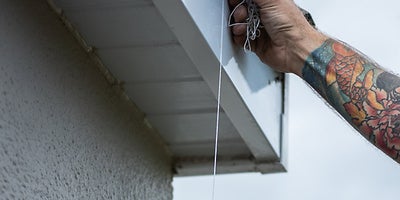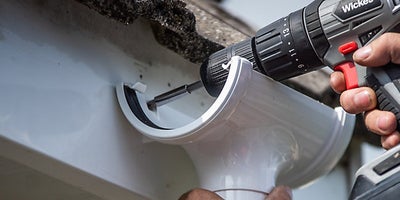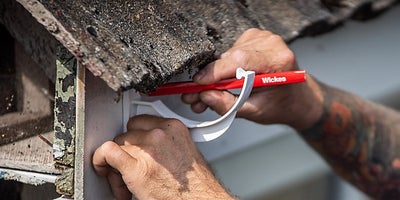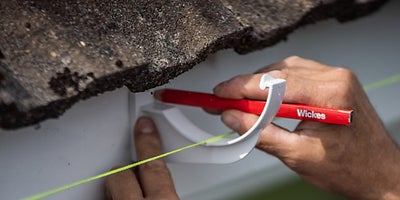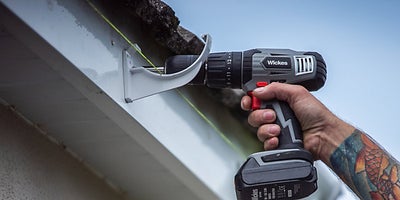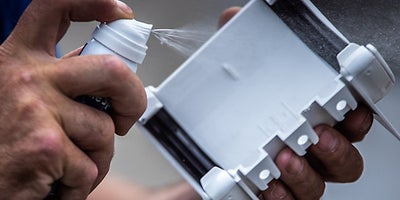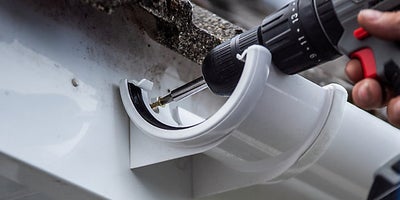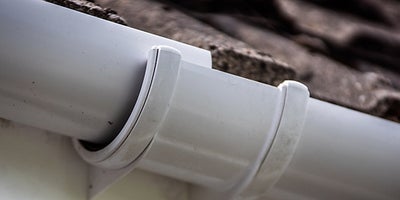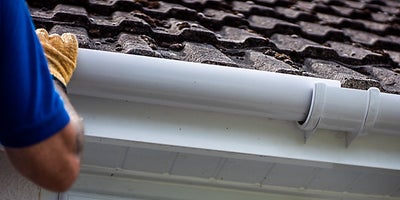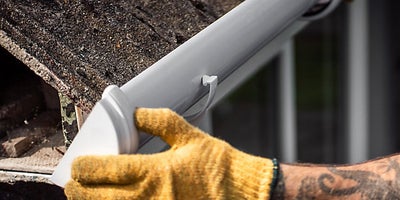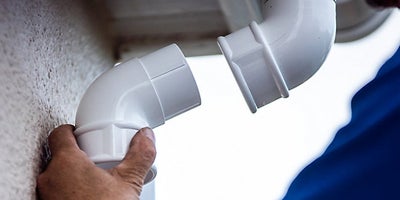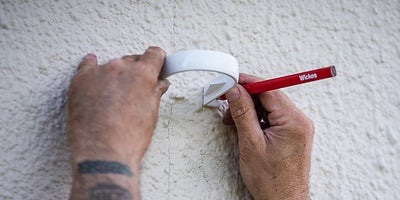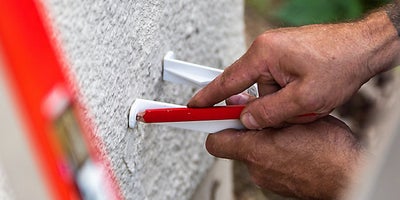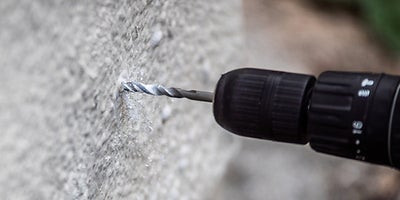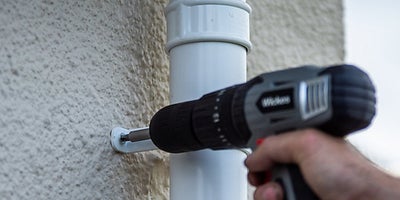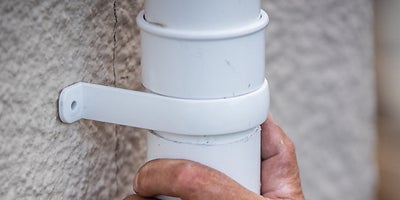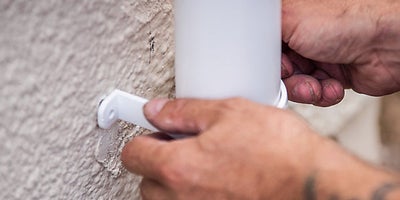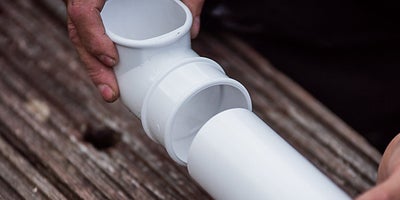How to fit guttering
TOOLS
SAFETY
USEFUL LINKS
Planning & preparation
- Here we will show you how to fit guttering and downpipe. We are using standard Half Round guttering which is durable, lightweight and suitable for most situations. However, if you live in an area of excessive rainfall, or have a larger than average roof, then you may want to install high capacity guttering instead
- Before starting, you’ll need to remove and dispose of all your old guttering. As it is relatively light, removing existing PVCu guttering is quite straightforward, but cast iron guttering is much heavier so it’s best to ask for help to remove it
- Guttering is available in a range of lengths, colours, profiles and materials, including lightweight cast iron effect guttering, so be sure to consider the range and choose a product that is most suitable for you
- Carefully plan your installation using the component diagram, as this will help you to be accurate when selecting the quantity and type of products required
- Blocked guttering can cause damp problems, so if you experience significant leaf fall, then consider fitting a leaf protection system
Do it right
- To ensure rainwater runs freely, you should allow a fall of 1:350 (about 3mm per metre) towards the outlet
- Guttering is generally sold in 2m or 4m lengths and is easily cut to size with a hacksaw, but be sure to de-burr any cut surfaces with a file or sandpaper
- If you live in an area that is prone to regular heavy snowfalls, position fascia brackets so they are no more than 400mm apart
- We would recommend using a specially designed silicone spray lubricant to help make fitting a little easier
- Consider installing a water butt to harvest rainwater for use in the garden or greenhouse
Staying safe
- Wear safety goggles when drilling or sawing
- Wear protective gloves when removing and handling the guttering
- If working at height, hiring scaffolding is recommended. Alternatively, if you’re using a ladder, take care when using it and be sure to move it regularly to avoid overstretching. It's best to have someone holding the ladder while you work
Aftercare
- Clear the gutter of debris to prevent blockages from forming
- If there has been a period of extreme weather, it’s advisable to inspect the gutter and brackets for any damage
- If you’ve fitted a white or light coloured gutter, you may need to wash them down with warm soapy water from time to time
